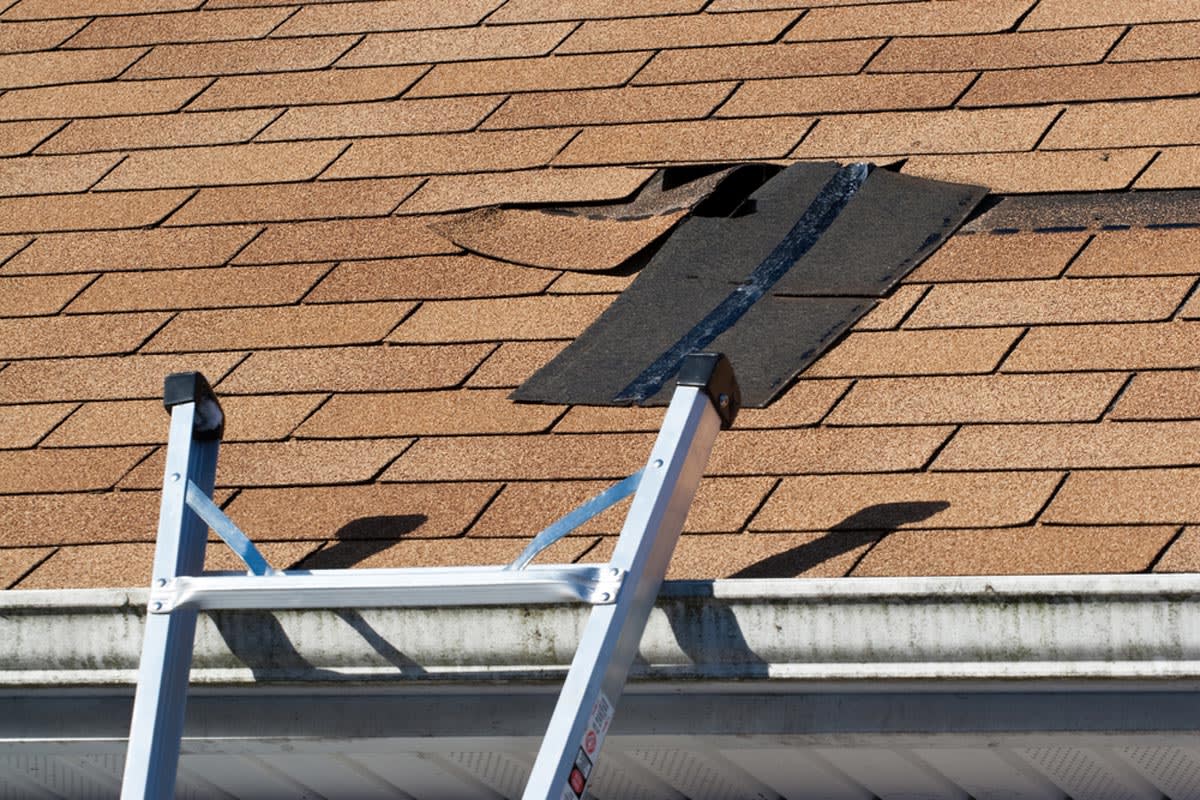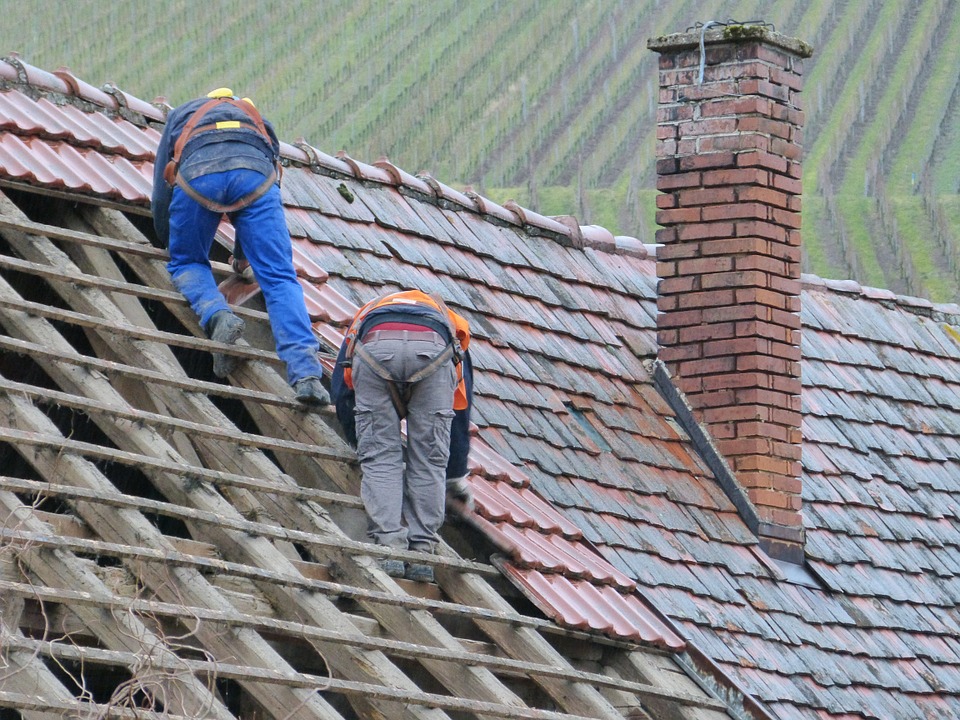Understanding the Different Kinds Of Roof Coverings: A Comprehensive Overview for Homeowners
With a variety of options-- varying from the conventional gable to the modern flat-- each kind provides one-of-a-kind benefits and difficulties that ought to line up with the homeowner's specific requirements and ecological considerations. As we check out the intricacies of different roof kinds, it comes to be obvious that one size does not fit all; the ideal choice might stun you.
Gable Roofings
Saddleback roofs, defined by their triangular form, are among one of the most preferred roof covering designs as a result of their simpleness and effectiveness in shedding water and snow. This design features 2 sloping sides that fulfill at a ridge, enabling effective drain and lessening the threat of water build-up. The steep pitch frequently related to saddleback roofs boosts their ability to deal with heavy rainfall, making them appropriate for different environments.
Along with their practical benefits, saddleback roofs supply aesthetic adaptability. They can be adapted to different building designs, from standard to modern-day homes. The style can also suit additional attributes such as dormer home windows, which boost all-natural light and air flow in the attic room space.
Moreover, gable roof coverings give ample room for insulation, adding to power effectiveness. Property owners can pick from a variety of roof materials, consisting of asphalt tiles, metal, and tiles, even more improving customization choices.
Despite their advantages, saddleback roofs may need additional assistance in locations susceptible to high winds or hefty snowfall. On the whole, the gable roofing continues to be a popular option as a result of its blend of functionality, toughness, and aesthetic charm.
Flat Roofs
Flat roofings are usually acknowledged for their minimalist design and sensible applications, specifically in business and industrial setups (oahu roofing). These roofings feature a horizontal or virtually straight surface, which enables simple building and construction and flexible space use. While they may do not have the visual appeal of pitched roofing systems, flat roof coverings use various benefits, particularly in urban atmospheres where making best use of area is crucial
Among the primary benefits of level roof coverings is their accessibility. Homeowners can utilize the roof covering space for different objectives, such as rooftop yards, balconies, or solar panel installments. In addition, level roofings are commonly a lot more affordable to keep and mount contrasted to their sloped counterparts, as they call for fewer materials and labor.
Common products made use of for level roof coverings include built-up roof covering (BUR), customized bitumen, and single-ply membranes, each offering distinctive advantages. Generally, flat roof coverings serve as a adaptable and useful choice for lots of property owners and organizations alike.
Hip Roof Coverings
Hip roofs are defined by their sloped sides that converge at the top, developing a ridge. This style stands out from gable roofings, as all 4 sides of a hip roofing system slope downwards toward the walls, giving an extra secure structure. The angle of the inclines can differ, permitting versatility in architectural visual appeals and functionality.
Among the key benefits of hip roofs is their capacity to stand up to hefty winds and damaging climate problems. The sloped surfaces allow far better water drain, lowering the threat of leakages and water damage. Additionally, hip roofing systems provide raised attic room, which can be used for storage space and even exchanged comfortable locations.
Nonetheless, building a hip roof can be extra complicated and expensive than simpler roofing types, such as gable roofings. The added material and labor associated with developing the slopes and guaranteeing appropriate structural stability can lead to greater expenses. Regardless of these downsides, numerous property owners favor hip roofing systems for their resilience, aesthetic allure, and possibility for power effectiveness.
Mansard Roofs
Mansard roofing systems, commonly recognized by their unique four-sided design, function 2 slopes on each side, with the reduced slope being steeper than the upper. This building style, originating from France in the 17th century, is not only cosmetically attractive but more helpful hints useful, as it makes best use of the useful space in the upper floorings of a building. The steep reduced slope permits for even more clearance, making it an optimal option for lofts or attics, which can be transformed right into living rooms.
Mansard roofs are defined by their versatility, fitting various architectural designs, from traditional to modern. They can be built with various products, including asphalt roof shingles, slate, or steel, providing home owners with a series of choices to match their budget plans and preferences. In addition, the layout permits for the integration of dormer home windows, enhancing all-natural light and ventilation in the top levels.
However, view it now it is necessary to consider the prospective downsides. Mansard roofings may call for even more upkeep due to the complexity of their design, and their high inclines can be challenging for snow and rain drainage. In general, mansard roofings integrate style with functionality, making them a popular choice amongst property owners looking for distinct architectural features.
Shed Roofing Systems
As homeowners increasingly look for simpleness and performance in their building layouts, shed roof coverings have become a prominent option. Characterized by a solitary sloping aircraft, a shed roof offers a minimalist aesthetic that enhances various home designs, from contemporary to rustic.
One of the main benefits of a shed roofing system is its simple building and construction, which frequently equates to decrease labor and material expenses. This style permits reliable water drainage, lowering the danger of leakages and water damage. Furthermore, the upright incline supplies adequate area for skylights, improving all-natural light within the inside.
Shed roofing systems also use adaptability in regards to usage. They navigate to these guys can be properly incorporated into additions, garages, or exterior frameworks like sheds and pavilions. Moreover, this roofing design can suit different roof materials, including steel, asphalt roof shingles, or also environment-friendly roof coverings, aligning with environment-friendly initiatives.
Nevertheless, it is necessary to take into consideration local environment conditions, as hefty snow lots might necessitate changes to the roofing system's angle or structure. In general, lost roof coverings present a practical and visually pleasing choice for home owners aiming to take full advantage of functionality without jeopardizing style.
Conclusion


Gable roofs, defined by their triangular form, are among the most prominent roof designs due to their simplicity and efficiency in dropping water and snow. oahu roofing. The high pitch typically linked with gable roofings improves their capacity to take care of hefty precipitation, making them ideal for different climates
While they may do not have the aesthetic appeal of pitched roofings, level roofs use numerous advantages, specifically in urban environments where making the most of room is crucial.
